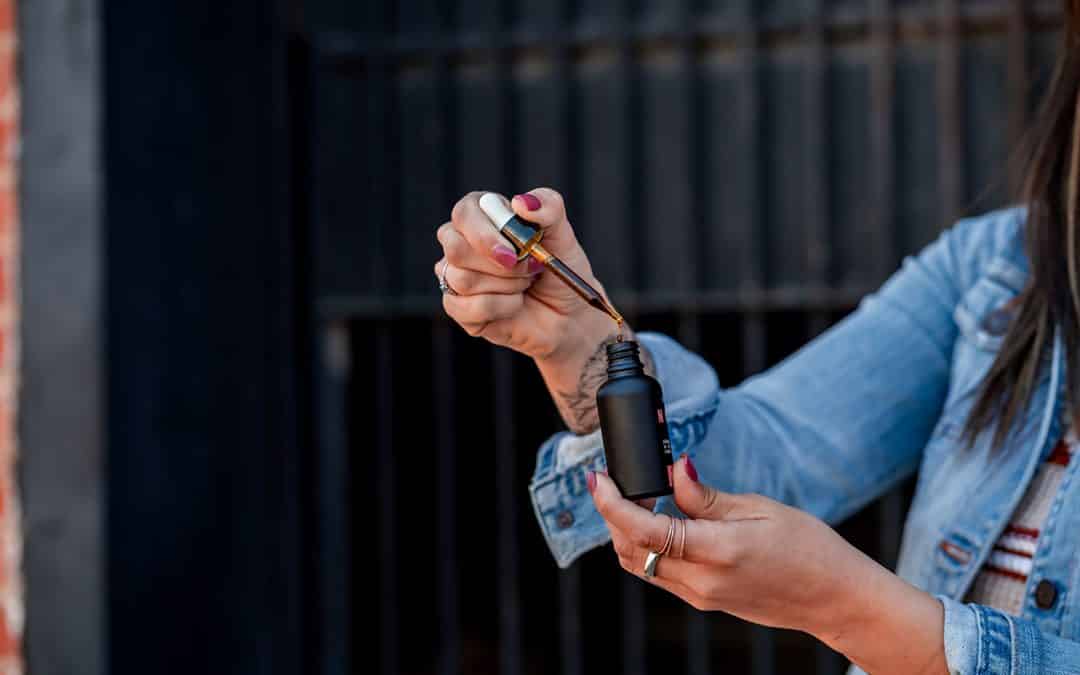Take Time to Dial in the Right CBD Dose for You
There’s no quick answer as to how much CBD you want to try. Every body and endocannabinoid system (ECS) is different—the key to finding the ideal dose of CBD is to gradually experiment, tuning into your body and adjusting accordingly. Hempsley Health provides some insight to help you along the way.
1) Do Your Research
While CBD is considered safe, it does interact with some prescription medications. These interactions are not necessarily harmful, but it’s important to be aware of them. Visit Hempsley Health for a comprehensive list of drug interactions, and always consult your doctor before making changes to your health regimen.
2) Know What You’re Looking For
There are different “types” of CBD: isolate, broad spectrum, and full spectrum. Research from a 2015 study, “Overcoming the Bell‐Shaped Dose‐Response of Cannabidiol,” shows that full spectrum products (those that have CBD as well as other trace amounts of cannabinoids, including THC) are more effective than isolate products (those with only CBD). If you are concerned about drug testing for THC, isolate or broad spectrum products (those that have a full range of cannabinoids with only the THC removed) may be best for you.*
3) Choose Wisely
CBD is unregulated, so it’s important that you trust the source you are buying from to ensure that you have a safe, quality product. The best way to vet a source is to ask if they test their CBD products, and if they can share the results of those tests.
4) Understand the Label
CBD is one of many cannabinoids, so while a product may list “500 mg hemp” or “500 mg cannabinoids,” only a fraction of that may actually be CBD. This isn’t necessarily a bad thing; ideally, CBD should have other cannabinoids incorporated to increase efficacy—but it’s important to know exactly how much CBD you are actually taking.
Remember, this isn’t unique to CBD. Even when a doctor prescribes you medication, it’s your responsibility to pay attention to how your body is responding and then communicate any side effects to your physician.
5) Identify Your Intentions
Acute issues typically require a larger dose to be taken as needed, while chronic issues usually need a consistent, smaller dose over a long period of time.
6) Start Low and Go Slow
A good place to begin is taking 1 to 5 milligrams per 10 pounds of body weight, always beginning on the lower end of that spectrum.
-
- If you’re dealing with a chronic issue, it’s recommended that you consistently dose for at least a week before modifying the dose.
- If you’re working with an acute issue, many recommend starting with a tincture rather than a capsule or edible. Tinctures can take effect more quickly than ingestibles. It’s also recommended to begin with a low dose and wait 30 to 45 minutes. If you’re not feeling the desired effects, do another small dose. Repeat this process until you find your “sweet spot,” then use that dose as your baseline moving forward.
7 ) Remember: More is Not Necessarily Better
CBD’s primary function is to slow the breakdown of your own endocannabinoids so that the body can use more of what it’s naturally producing. So there comes a point when that breakdown can’t be slowed any further, and any extra CBD will be excreted like any other nutrient.
Good to Know
- Don’t worry about “overdoing it;” there’s no overdose, but in high doses (50mg+) reports of diarrhea, slight drops in blood pressure that can lead to dizziness, tiredness, dry mouth
- Studies have shown that the efficacy of CBD is a bell-shaped curve (referred to as the “Goldilocks Zone”), meaning that there is a “sweet spot” of taking just enough but not too much CBD for optimum effects.
*Note: Isolate products tend to be three to five times less effective in achieving desired results compared to full spectrum products.
The statements made regarding these products have not been evaluated by the Food and Drug Administration. The efficacy of these products and the testimonials made have not been confirmed by FDA-approved research. These products are not intended to diagnose, treat, cure, or prevent any disease. All information presented here is not meant as a substitute for alternative to information from health care practitioners. Please consult your healthcare professional about potential interactions or other possible complications before using any product. The Federal Food, Drug, and Cosmetic Act requires this notice.
Photography by Michal Wozniak via Unsplash
